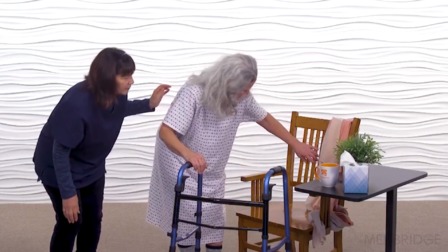Dementia Care: Communicating When Someone Has Dementia
Presented by Teepa Snow
12-Month Subscription
Unlimited access to:
- Thousands of CE Courses
- Patient Education
- Home Exercise Program
- And more
Non-Financial: Teepa Snow has no competing non-financial interests or relationships with regard to the content presented in this course.
This course will help learners develop better interaction skills when working with people living with dementia (PLwD). Using a consistent and sequential cueing system is part of developing skillful communication in dementia care. Beginning all interactions with a positive physical approach (PPA), a positive personal connection (PPC), and a positive action starter (PAS) greatly reduces the risk of negative encounters and problematic interactions. The use of person-first, “go with the flow” responses and improved non-verbal strategies will be demonstrated to foster better understanding of messages and requests as well as better participation with fewer episodes of distress or frustration.
Meet your instructor

Teepa Snow
Teepa Snow is an advocate for those living with dementia. She has made it her personal mission to help families and professionals better understand how it feels to be living with such challenges and seeks to change and improve life for everyone involved. Her practice has included everything from neuro intensive care units in…
Chapters & learning objectives

1. Dementia Changes How We Should Communicate
This chapter will demonstrate attempts to communicate using only words and language. This chapter will also highlight the problems that occur when using these techniques on people in general and for PLwD in specific.

2. Changing Abilities Require Different Strategies to be Successful
This chapter will review three key times when communication is desired. The key times discussed will be: just having a simple conversation – being social, getting the person to do something, and dealing with distress.

3. Forming a Relationship is Part of Determining How to Communicate
This chapter will discuss human preferences for receiving data in a sequential manner for ease of comprehension and processing: visual-verbal-touch. This chapter will also highlight the connection between developing a sense of connection and control when this sequence is adhered to and a sense of loss of control and connection when it is not. Demonstrate the same interaction using sequential cueing. This chapter will demonstrate PPA and discuss its value and use throughout the condition. This chapter will demonstrate PPCs and discuss their value and use throughout the condition. Finally, this chapter will demonstrate PASs and discuss their value and use throughout the condition.

4. Specific Skills for Getting Connected and Getting Started
This chapter will show the use of these techniques in role-play situations to emphasize the development of new skills and ‘breaking’ of old habits Highlight key concepts that are essential in having effective communication when dementia exists – emphasizing non-verbal strategies, use of props, slowing down, and starting where the person is.
More courses in this series

Overview of Dementia: Alzheimer's, Vascular, Lewy Body, Frontotemporal
Teepa Snow

Dementia Care: Understanding Common Symptoms for Better Care
Teepa Snow

Dementia Care: Reducing the Risk of Challenging Situations
Teepa Snow

Dementia Care: Coping with Challenging Situations in Support & Care
Teepa Snow

Dementia Care: Using the GEMS States Model for Personal Care Tasks
Teepa Snow

Dementia Care: Communicating When Someone Has Dementia
Teepa Snow

Dementia Care: Offering Engagement for People Living With Dementia
Teepa Snow

Dementia Care: Helping as Abilities are Failing and Life is Ending
Teepa Snow